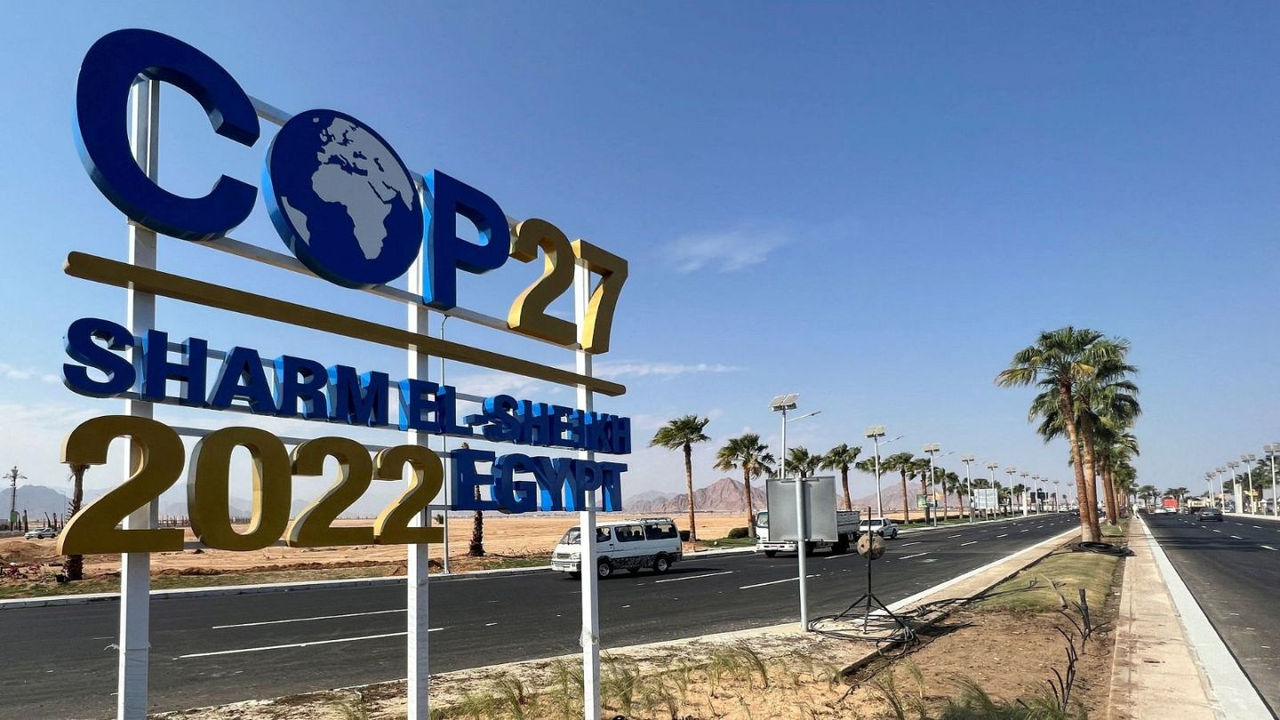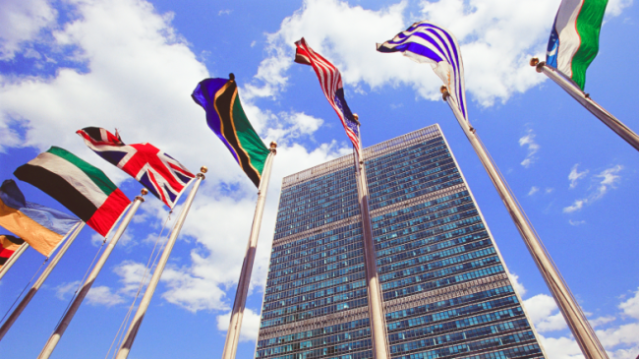Greening global digital policy — what it means for business
Issue 2 — November 2022
In 2020, when a pandemic sent populations into lock-down, those who could went digital and those who couldn’t struggled. Taking note of the resilience dividend of digitalization, policymakers in countries and in international organizations designated the digital transformation as necessary and urgent. By the time delegations reached Sharm El-Sheikh for COP27 on the 8th of November, what used to be “moonshot” agenda for international organizations, the digital transformation became seemingly overnight an urgent global effort to steer a soaring rocket.
On 10 November 2022, the World Bank Group convened a panel on Catalyzing the Green Digital Transformation” to make the case for a global digital policy that integrates the green agenda from the start. Holding such a panel at the 27th Conference of the Parties to the UNCCF (COP 27), which was dubbed the “Implementation COP,” is a call to action.
The framework adopted by the World Bank requires action on greening digital technology and on greening with digital technology. Greening digital technology requires reducing its carbon footprint (Climate mitigation) and climate-proofing its infrastructure against climate threats, such as flooding and high temperature (Climate adaptation). Greening with digital technology on the other hand requires deploying it to decarbonize and climate proof other sectors such as transport, energy and infrastructure. This two-sided framework is very similar to the European Commission’s “twin transitions” strategy.
The contribution of the digital sector to global emissions is estimated at 1.5-4%, a share like that of the commercial aviation sector. But this is projected to increase significantly at the current speed of digitalization. Since 2020, the number of internet users increased by 800 million and the volume of data traffic by 25%- 50%. In 2021, 400 new technology companies worth $1 billion dollars or more were created in China and India alone. Eight percent of adults in developing countries paid merchants digitally for the first time. The International Telecommunication Union (ITU) estimates direct GHG emissions of the sector to reach 7% by 2040. These numbers inform the call for global effort to make green standards part of the digital transformation from the start.
But greening digital policy carries other promises. The World Economic Forum reports that adopting digital technology at scale in the energy, materials, and mobility industries could reduce CO2 emissions by 20% by 2050. That in addition to how such policy can make digital infrastructure, digital ecosystems, cities, and rural communities more resilient to natural threats caused by a changing climate.
Until recently, global digital policy focused on expanding access to digital connectivity, digitalization of government and financial services, and promoting digital innovation in the private sector. As digitalization leapt faster, digital public policy began to grapple with competing objectives beyond access and affordability. Sustainability, resilience, and de-carbonization are now gaining prominence.
But what does this all mean for business?
Commenting on the outcomes of COP27, this Issue offers a summary of recent multilateral sources and events that reveal the direction of travel. Four signposts are worth looking out for:
(1) As countries include more digital technology adoption in their climate commitments under the Paris Agreements and seek to attract green investment to meet their climate and digitalization targets, digital businesses will find a growing market in low- and middle-income countries.
(2) Governments, and regional and international organizations will develop and rely more on clear methodologies for measuring the climate impact of digital solutions.
(3) Data centers and other types of digital infrastructure will be subject to more stringent regulations and standards on sustainability and climate resilience. More broadly, the sector will see increase in environmental regulation including on energy use and e-waste management.
(4) Demand for private capital, know-how, and data to achieve the objectives of green digital transformation will lead to surge in investment incentives, technology transfer arrangements, and data policies and platforms that enable data-sharing for climate.
The question for governments and businesses alike will be how to balance the trade-offs that will inevitably arise between the investment needed to achieve the climate benefits and the affordability necessary for universal access. As the highlights provided in this issue of the Multilateral Monitor show, a green global digital policy is still in the making and the opportunity is ripe for engagement and public-private collaboration.

EDITOR
Heba Shamas
VP Multilateral Engagement
Global Public Policy
COP27 on Green and Digital Transition
The 27th UN Conference of the Parties to the UNFCCC took place from 8-18 November in Sharm el-Sheikh (Egypt) with strong innovation focus. The United Nations Climate Innovation Hub (UGIH) hosted the UGIH Pavilion as place for new products, new services, new innovations, and new business models. The Pavilion featured 100 sessions focusing on innovation and climate, with a whole day dedicated to Green and Digital transition. See full agenda @UNGIH Program.
During the Green and Digital Transition Day on the 10th of November, the World Bank organized a panel on Catalyzing the Green Digital Transformation. The event focused on “[tackling] challenges and opportunities for low -and middle-income countries to reduce digital sector emissions and harness technologies for adaptation and mitigation,” in which Mari Pagestu, the World Bank Managing Director, and Riccardo Puliti, Vice President for Infrastructure advocated for a new paradigm for multilateral action on digital transformation that is both green and digital. The 40-minute panel offers a good introduction to the open debates on greening global digital policy with Marden Hanna, Global Head of Sustainability and Climate Policy at Google, offering an informative example of how the private sector can engage with this process of global policymaking.
The World Bank Panel was a pre-launch event of the upcoming flagship Report by the same title to be published by the World Bank Digital Development Partnership (DPP). The Overview of the Report is now available for a sneak peek. The Report explains how the World Bank may incorporate sustainability in its approach to digital development going forward.
The International Telecommunication Union (ITU) on Standards for Green Digital Transformation
The ITU used COP27 to promote and educate on the use of standards to achieve a green digital transformation by organizing several courses and tutorials. The sessions explored key topics such e-waste and energy efficiency, and key international standards, such as ITU-T L.1480, showing how ICT solutions enable the net-zero transition in other sectors, and ITU-T L.1470, outlining ICT emissions trajectories compatible with the Paris Agreement.
ITU activities at COPT 27 highlighted the private sector’s role as an important driver of the green economy transformation and the funding gap faced by SMEs to transition into sustainable practices. As a multi-stakeholder organization with 193 members focused on the ICT sector, it is well positioned to serve the role of the standard-setter in this area. ITU has prioritized the digital transformation in its current strategic plan. This is a space for collaboration and standardization on the green transformation that is worth keeping an eye on.
The EU on the Twin Transition
The EU is an exporter of norms, regulations, and policy solutions in areas such as data governance and privacy. This is also the case for the green digital policy agenda. The EU defines “galvanizing the twin transitions globally” through rule-based multilateralism and value-based cooperation as key priority for its twinning strategy. A panel on Global-south-Global North Cooperation on the Digital and Green Twin Transition during COP27 shows how the European Commission engages with governments around the world to promote the EU’s twin transitions vision.
The EU’s action plan on the twin transitions targets energy consumption and waste generation, disposal, and management. It aims to reduce the climate impact of energy and waste in and with digital technology through measuring and monitoring, setting green standards, regulation, data-sharing, promoting competitive sustainability, and channeling finance to technology that supports both digitalizing and greening the economy. To understand the thinking behind the EU’s strategy see the Joint Research Centre’s Science for Policy report Towards a green and digital future. Key requirements for successful twin transitions in the European Union.
Green and Digital in Action
International development organizations do not yet integrate green objectives or standards in the digital development projects they finance or support. Tension between affordability and the investment needed to achieve climate benefits is likely to be a key challenge. Yet, some green digital projects are emerging. Scaling such models will be key to making green designs affordable. Below are some examples:
The International Finance Corporation (IFC) has been increasing investment in digital infrastructure passing the $1 billion dollar mark for the second year in a row. In addition to financing, IFC provides investees with support to improve corporate governance, social, and environmental practices in line with IFC’s performance standards. IFC’s portfolio targets African countries including strong presence in fragile, and conflict affected countries. Its investment in Latin American includes Brazilian data center operator Scala's plans to build Latin America's first data center to run fully on renewable energy.
The Multilateral Investment Guarantee Agency (MIGA) insured up to US$25.6 million Escotel Mauritius investments in solar power generation in Liberia and Sierra Leone against political risk for a period of up to ten years. The Escotel projects will provide efficient and climate-friendly power by installing photovoltaic solar panels at each cell phone towers that will either supplement or replace entirely the diesel generators.
On greening with digital technology, a report published by IDB Invest and Accenture in October 2022, provides examples of the challenges and opportunities facing the digital transformation of the agricultural sector in Latin America and the Caribbean and the sustainability benefits of such transformation.
On greening the information and telecommunication sector, South Korea offers a good example. Knowledge collaboration between the World Bank and the South Korean government allows the sharing of this successful experience globally. It is likely to shape innovation in development projects that aim to green the digital infrastructure.
Click here for PDF of this issue.




